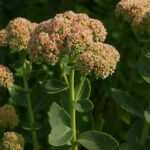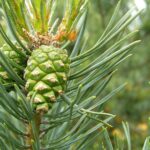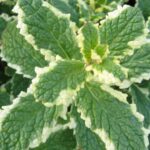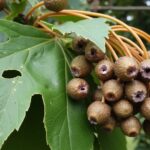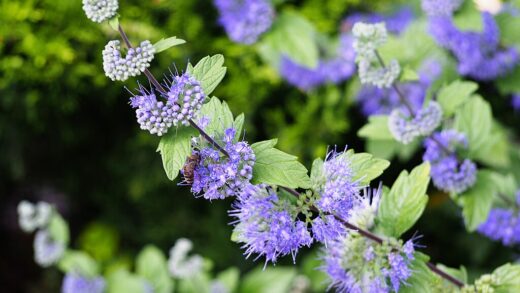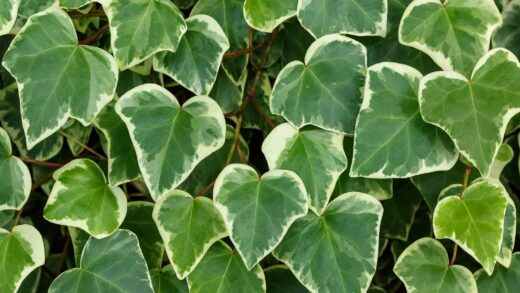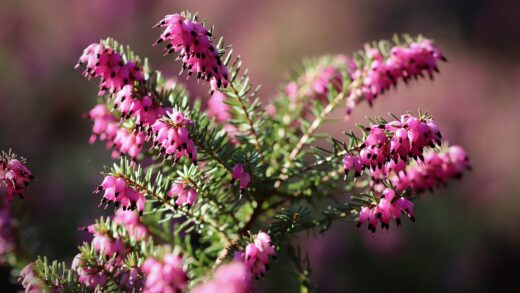The sweet chestnut, while generally a hardy and resilient species, still requires consideration and care to successfully navigate the challenges of winter, especially in its youth or when planted in colder climates. Proper wintering, or winterization, is not a single action but a series of preparatory steps taken throughout the autumn to ensure the tree enters its dormant period in the best possible condition. These measures are designed to protect the tree from cold temperatures, frost cracking, winter desiccation, and hungry wildlife, setting the stage for vigorous growth when spring returns. A little foresight and preparation in the autumn can make all the difference in the long-term health and survival of the tree.
Preparing the tree for dormancy
The process of preparing a sweet chestnut for winter begins in late summer and early autumn. One of the most important steps is to cease all fertilization by mid-summer. Applying fertilizer, particularly those high in nitrogen, late in the season can stimulate a flush of new, tender growth. This new growth will not have sufficient time to harden off and properly acclimate before the first frosts arrive, making it extremely vulnerable to cold damage. The tree needs to receive signals from the shortening days and cooler temperatures to slow its growth and begin preparing for dormancy naturally.
Ensuring the tree is well-hydrated before the ground freezes is another critical step. Although the tree is dormant above ground, the roots can still be active as long as the soil temperature is above freezing. Watering the tree deeply and thoroughly in the autumn after the leaves have dropped but before a hard freeze helps to insulate the roots and ensures the tree has adequate moisture reserves to prevent winter desiccation, a condition where the tree loses water through its bark on dry, windy winter days. This is particularly important for young trees and evergreens, but deciduous trees like chestnuts also benefit greatly.
Good sanitation around the base of the tree is also a key part of winter preparation. Raking up and removing all fallen leaves, nuts, and burrs is important for reducing the overwintering habitat for various pests and fungal spores. Diseases like leaf spot and scab can survive the winter on fallen leaves and re-infect the tree in the spring. Promptly disposing of this debris, either by burning (where permitted) or composting it away from the tree, helps to break the life cycle of these pathogens and pests, leading to a healthier start the following season.
Finally, a late autumn inspection of the tree is a wise practice. Look for any dead, damaged, or diseased branches that could be a potential problem during winter storms. Heavy snow or ice can cause weak or damaged branches to break, which can create large, ragged wounds that are difficult for the tree to heal. Removing these potential hazards before winter sets in is a good preventative measure, although major structural pruning should be left for the late dormant season in late winter or early spring.
Protecting young trees from cold and frost
Young sweet chestnut trees, particularly in their first one to three winters, are significantly more vulnerable to cold damage than their mature counterparts. Their thin bark offers little insulation, and their root systems are not yet deep and extensive enough to escape the frost line in the soil. Therefore, providing them with extra protection is essential for their survival and successful establishment, especially in regions that experience severe winters or are at the northern edge of the chestnut’s growing range.
One of the most effective methods for protecting the root zone is to apply a thick layer of organic mulch around the base of the tree after the first light frost but before the ground freezes solid. A layer of 10 to 15 centimeters of wood chips, straw, or shredded leaves acts as an insulating blanket, moderating soil temperature fluctuations and protecting the shallow roots from repeated freeze-thaw cycles that can cause damage and heave the tree out of the ground. It is important to keep the mulch pulled back a few centimeters from the trunk itself to prevent moisture from accumulating against the bark, which could lead to rot.
The trunk of a young tree is also susceptible to a condition called sunscald or frost cracking. This occurs on cold, sunny winter days when the sun warms the southern or southwestern side of the trunk, causing the dormant cells to become active. When the sun sets or is blocked by clouds, the temperature plummets rapidly, killing and rupturing these active cells, which results in long, vertical cracks in the bark. To prevent this, you can use commercial tree wraps or guards, or paint the trunk with white, water-based latex paint diluted by half with water. The white color reflects the sunlight and keeps the bark temperature more stable.
For very small or recently planted saplings in particularly harsh climates, providing a temporary windbreak can also be very beneficial. Burlap screens or a structure made of stakes and burlap can shield the young tree from harsh, drying winter winds that can cause winter desiccation. This helps the tree to conserve its moisture throughout the dormant period. Any such protective coverings should be removed in the spring as the weather warms up to allow for proper air circulation and to prevent overheating.
Managing winter wildlife damage
During the winter months when food sources are scarce, many animals turn to trees for sustenance, and young sweet chestnuts can be a prime target. Rabbits and voles are common culprits that can cause severe damage by gnawing on the bark at the base of the tree. If they chew the bark all the way around the trunk, a practice known as girdling, it will kill the tree by cutting off the flow of nutrients between the roots and the canopy. Voles often tunnel under the snow, making their damage invisible until the spring thaw.
The most reliable way to prevent this type of damage is to install a physical barrier around the trunk. A plastic tree guard or a cylinder made of hardware cloth (a type of sturdy wire mesh) is highly effective. The guard should be tall enough to extend above the expected snow line to protect against rabbits, and it should be buried a few centimeters into the soil to deter voles from tunneling underneath it. The guard should be loose enough to allow for air circulation and should be checked annually to ensure it is not becoming too tight as the trunk grows.
In areas with a significant deer population, winter browsing can be a serious issue for the branches and buds of young trees. Deer can stunt a young tree’s growth or permanently alter its shape by repeatedly eating the terminal buds. Fencing is the most effective method for excluding deer. For a few individual trees, a simple cage made of wire fencing and stakes around each tree can be sufficient. For larger plantings, a perimeter fence around the entire orchard may be necessary.
It is also important to avoid creating a habitat for these animals near the base of the trees. Keep the area immediately around the trunk clear of tall grass, weeds, and deep mulch right up against the bark, as these provide cover for voles and rabbits. While mulching is important for root protection, maintaining a small, clear circle directly around the trunk is a key part of an integrated strategy to prevent winter wildlife damage. This simple step makes the area less inviting for pests seeking shelter.
Dormant season care and spring transition
The winter dormant season is an ideal time for certain maintenance tasks, particularly structural pruning. With the leaves gone, the tree’s branching structure is clearly visible, making it easier to identify and remove any crossing, rubbing, or poorly attached branches. This type of pruning helps to establish a strong framework for the future and is best done in late winter or very early spring, before the sap begins to flow and the buds start to swell. This timing minimizes stress on the tree and allows the pruning wounds to begin healing as soon as growth resumes.
Throughout the winter, it is a good idea to periodically check on the trees, especially after heavy snowfalls or ice storms. Gently brush off heavy snow from the branches of young trees to prevent them from bending or breaking under the weight. Inspect tree guards and other protective measures to ensure they are still in place and functioning correctly. This is also a good time to look for any signs of winter damage, such as frost cracks or wildlife gnawing, so that you are aware of any issues that may need attention in the spring.
As winter draws to a close and the weather begins to warm, it is time to think about helping the tree transition back into its growing season. Any protective wraps or burlap screens should be removed as the risk of hard frosts passes. This is important to allow for good air circulation around the trunk and to prevent the buildup of moisture and heat, which could harbor pests or diseases. Rake back the thick winter mulch from the base of the tree to allow the soil to warm up more quickly in the spring sun.
The arrival of spring is also the time to assess how well the tree has weathered the winter. Look for any signs of dieback on the tips of the branches, which may need to be pruned back to a living bud. Check the overall health of the buds and bark. A successfully overwintered tree will have plump, healthy-looking buds ready to burst forth with new growth. This successful transition is the result of the careful preparation and protection provided during the preceding autumn and winter.



